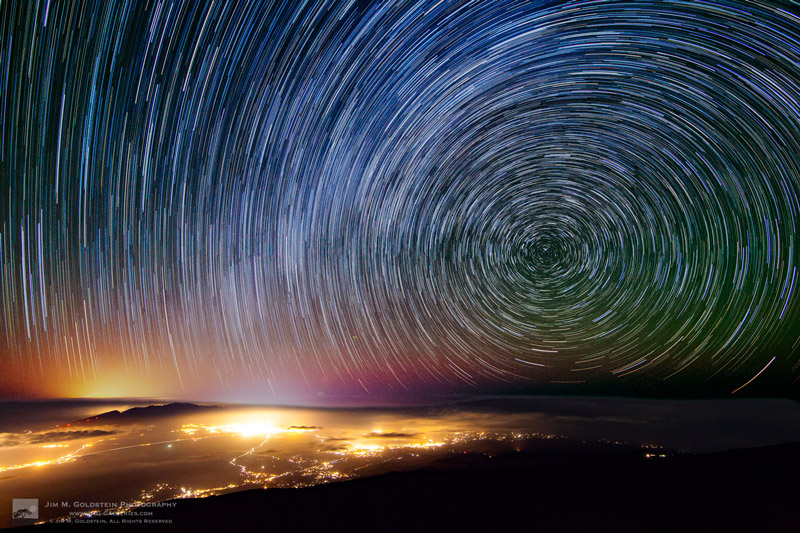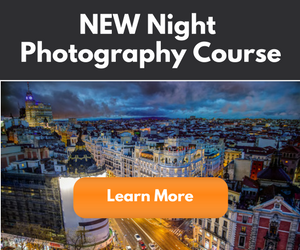The post Photographing Stars Using a Kit Lens appeared first on Digital Photography School. It was authored by Adeel Gondal.

Have you seen those amazing starry sky and Milky Way photographs from professional photographers and wondered how to create similar results? Have you never tried because you thought you didn’t have the proper equipment?
Let me tell you, “You are wrong!”
If you own a normal DSLR or mirrorless camera, you can create stunning star photos with only a kit lens.
In this article, I will explain the whole process of photographing stars with your kit lens. I’ll give you step-by-step instructions in the easiest possible way – so that, even if you don’t have much technical knowledge, you can start capturing star photos like a pro.
Let’s dive right in.
The star photography basics
To get started, you need to have following points in mind:
- You must shoot in a place away from the city lights. The less light pollution you have, the more chance you’ll have of getting clear stars.
- You’ll want a moonless night. Stars can also be shot on a full-moon night, but the brighter the moon is, the more light pollution it creates, and the stars will not be as prominent.
- You’ll need a normal DSLR or mirrorless camera with a standard 18-55mm kit lens (such as this Canon lens or this Nikon lens).
- You’ll also want a tripod.
You can Google your surroundings to find locations that are far away from the city (check out Dark Sky for a helpful interactive map).
You should know beforehand in what direction, and at what time, the moon is going to rise. That will help you a lot with the composition of your images.
However, a moonless night is always best to shoot stars – so I recommend checking the current moon phase before heading out.
Additionally, you can use a compass app on your smartphone to locate the North Star for star trails. To get an idea of the stars above your location, you can download an app called Star Chart (for iOS or for Android) or Google Sky. Both of these apps also show you the direction of the Milky Way, so you can shoot it directly and get amazing results.
I also recommend checking out PhotoPills; this app offers an incredible suite of features for the beginner (or more advanced!) night sky photographer.
Anyway, these apps are pretty accurate. With their help, you can see Mars, even with your naked eye (I’m sure you’ve seen Mars before, but were likely unable to differentiate it from the surrounding stars).
If you want to plan a future shoot or look for an appropriate time to shoot the Milky Way in your location, you can download the desktop app Stellarium. Just pop in your coordinates, and it will show you the direction of the Milky Way at a specific date and time.
Thanks to Stellarium, you can know the exact time of year the brightest part of Milky Way will be above your location (so you can do some amazing star photography!).

Key camera settings for photographing stars
Now let’s get to the important part of photographing stars with a kit lens:
Camera settings.
You will need to take control of your camera, so you’ll want to keep it in Manual mode.
Change the shooting mode to Manual and adjust your setup to the following settings:
Focal length
Set your focal length to the widest possible option. In the case of a kit lens, this will often be 18mm.
While you can technically choose any focal length you want, the more you zoom in, the fewer stars you will be able to capture.
Plus, your optimum exposure time before star trails start to develop will decrease as you increase your focal length (see the 500 Rule, discussed in the shutter speed section below).
Aperture
Setting your aperture to the widest option is key here; for my kit lens, this is f/3.5.
By using the widest aperture your lens allows, more light will enter through your lens.
And this will result in brighter stars and a brighter Milky Way!
Shutter speed
If you are only shooting stars and the Milky Way, I recommend a shutter speed of 20 seconds.
Why 20 seconds?
Here’s the answer:
A shutter speed of under 20 seconds will result in less light reaching the camera sensor.
And a shutter speed of over 20 seconds will start to create star trails. In other words, the stars will move visibly across the sky.
In fact, there’s a handy equation for calculating your shutter speed, called the 500 Rule:
The optimum exposure before you start getting star trails is calculated by dividing 500 by your focal length (you’ll need to divide the answer once more, by around 1.5, if you are using a cropped sensor.)
So in the example of an 18mm lens on a cropped sensor, divide 500 by 18, for an answer of 27.78. Then divide this again, by 1.5, to get 18.52, which is roughly 20 seconds.
Make sense?

ISO
Start by keeping your ISO at 1600. You can then increase it later, depending on your results.
But keep in mind:
The greater the ISO, the more noise there will be in your image.
Now, this does depend on the signal-to-noise ratio of the camera body you are using; high-end cameras tend to offer the best high-ISO noise performance, and even modern consumer cameras feature decent results at high ISOs. But try to boost the ISO on an older camera, and you’ll end up with all sorts of unwanted noise.
Remote shutter release
You’ll want to have a remote shutter release to avoid camera shake from hitting the shutter button.
If you don’t have a shutter release, just use your camera’s 2-second or 10-second timer.
That will minimize any blur in the picture due to camera shake.
You should also switch off any “vibration reduction” or “image stabilization” technology included in your camera or lens, because this technology can actually increase blur during long-exposure images.
Focusing your lens to infinity
After dialing in all these settings, here’s the only important thing left to do:
Focus your lens to infinity.
Now, a kit lens doesn’t have an infinity marker on it, so you’ll need to use hyperfocal distance values to focus your lens.
Here’s what you do:
Mount your camera and lens on a tripod, and focus on any bright object at a distance of 20 feet or more.
(If you are in the dark and struggling to focus, you can point a flashlight toward your camera and use this as a point of focus.)
Once the lens is focused beyond 20 feet, its hyperfocal distance will project to infinity and your stars will be sharp. This will also help get everything in the foreground sharp, too.
Don’t forget to switch your lens to manual focus; otherwise, it will start to hunt for focus when the shutter is pressed.
You may be wondering:
Why is focusing to infinity so important?
If your lens is not focused to infinity, you will capture a Milky Way image. However, the stars will not be as sharp and they’ll appear bigger, like this:

And this:

And this:

You’ll get a similar result if you use a too-long shutter speed and produce star trails.
So make sure you pay careful attention to both your settings and your point of focus.
A quick tip for photographing stars
Once you reach your location, it’s better to first sit in the dark for at least 15 minutes to let your eyes adjust to the surroundings. This will help you see a lot of stars (and even the Milky Way) with your naked eye. It will also help you compose your images better – because it’s easier to create beautiful compositions when you can see!
Plus, enjoying your surroundings for a while is better than simply shooting as soon as you reach the site.
Post-processing your star photos
When it comes to post-processing your star images, there are two things you should know:
First, always shoot in RAW. This will give you a lot of room for post-processing (that won’t affect the image quality).
Second, some post-processing is always needed to get optimum results. You can find many tutorials on how to post-process Milky Way images, including some here on dPS!
Capture stunning star trails
If you are satisfied with your shots, the next step is to capture star trails.
Simply locate the North Star using the Star Chart app discussed above.
Then keep the North Star in your composition, because this is the star that all other stars rotate around.
For star trails, all camera settings will remain the same, except that you can increase the shutter speed to 30 seconds.
Alternatively, you can go with faster shutter speeds (i.e., 20 seconds or faster, especially if there are lights in the area and 30 seconds results in overexposed images).
Keep your camera on its continuous shooting mode, and let it capture as many exposures as possible. The more pictures you have, the more clear your star trails will be. Of course, continuous shooting will only create a series of short star trails; later, you can join all the exposures in Photoshop or use special software to create full trails (such as StarStaX).
For instance, this shot is a combination of 18 separate exposures:

Alternatively, you can capture one shot of the stars and make star trails with it using the HM Technique:

And you’re also free to have fun with Photoshop:

Once you’ve nailed photographing the Milky Way, try including foreground objects for better compositions:

Photographing stars using a kit lens: conclusion
You’re all set to shoot your own stars!
With the help of a kit lens, you can create some beautiful star photography – the kind that’ll make you happy and impress your friends, too.
You could even try creating panoramas to get more of the Milky Way in your composition, like this:

So happy shooting, and keep me updated with your results! And if you need any help, let me know down in the comments.
The post Photographing Stars Using a Kit Lens appeared first on Digital Photography School. It was authored by Adeel Gondal.








 Recently we introduced our new Night Photography course by dPS writer Jim Hamel. Learn more about this brand new course here, so you can take stunning night photos too!
Recently we introduced our new Night Photography course by dPS writer Jim Hamel. Learn more about this brand new course here, so you can take stunning night photos too!

















You must be logged in to post a comment.